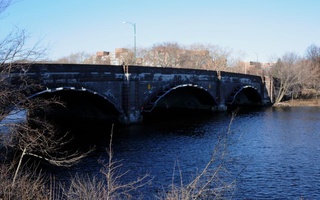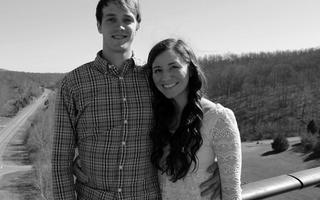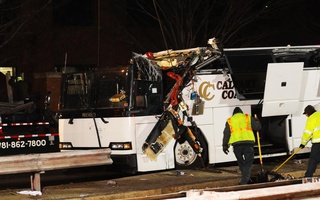The bridge connecting Harvard Square and Boston will be renovated to accommodate three lanes instead of four as part of a broader rehabilitation project conducted by the Massachusetts Department of Transportation.
The reconstruction of the 440-foot-long Anderson Memorial Bridge is part of the $3 billion Accelerated Bridge Program, which will rehabilitate a series of structurally inefficient bridges over a period of eight years. The project hopes to improve the condition of the commonwealth bridges and stimulate economic development and job creation.
The Anderson Memorial Bridge—which was built in 1913—currently has four 10-foot wide traffic lanes with two lanes in each direction, northbound and southbound. Each side of the bridge also supports a 10-foot wide sidewalk.
After the fourth and final stage of construction, three lanes of traffic—two northbound and one southbound—will run the length between Harvard Square and Boston, along with one additional 5-foot wide bike path in either direction. The 10-foot wide sidewalk heading in both directions will be maintained.
It remains unclear when exactly the Anderson Bridge will be renovated.
The proposed construction process will also involve closing off two lanes at a time to fix the center, eastern, and western parts of the bridge during the first three stages of its rehabilitation.
Rowing traffic through the three arches under the bridge will also be affected—one arch barrel at a time will be closed for concrete repairs.
“The Accelerated Bridge Program is a very necessary component of the Patrick-Murray Administration’s program to repair infrastructure,” said Richard Nangle, spokesperson for the Department of Transportation. “I think people will be pleased with the results.”
News of the plans to renovate the Anderson Bridge were fleshed out at a public information meeting presented by the Massachusetts Department of Transportation last Thursday. Audience members expressed concern about issues such as historic preservation measures and adequate lighting on the bridge.
—Staff writer Xi Yu can be reached at xyu@college.harvard.edu.
Read more in News
Male Undergrad Robbed and Beaten on Memorial Dr.Recommended Articles
-
Oh Allston, My AllstonLights, camera, Allston.
-
 Allston Bridge To Undergo Repairs
Allston Bridge To Undergo Repairs -
 Michael Beckham and Sarah Godfrey
Michael Beckham and Sarah Godfrey -
7 AM: Daybreak on the CharlesSeptember 7, 7:00 a.m. The sun had just risen from its nighttime slumber, and while most college students were hours away from consciousness, I was traipsing down the banks of the Charles.
-
 More Than 30 Injured in Bus Crash Following Trip to Harvard
More Than 30 Injured in Bus Crash Following Trip to Harvard -
Thirty-Three ArchesThere is something both timeless and eerily beautiful about arches in Safavid architecture. The elegant ogees appear in both two ...













